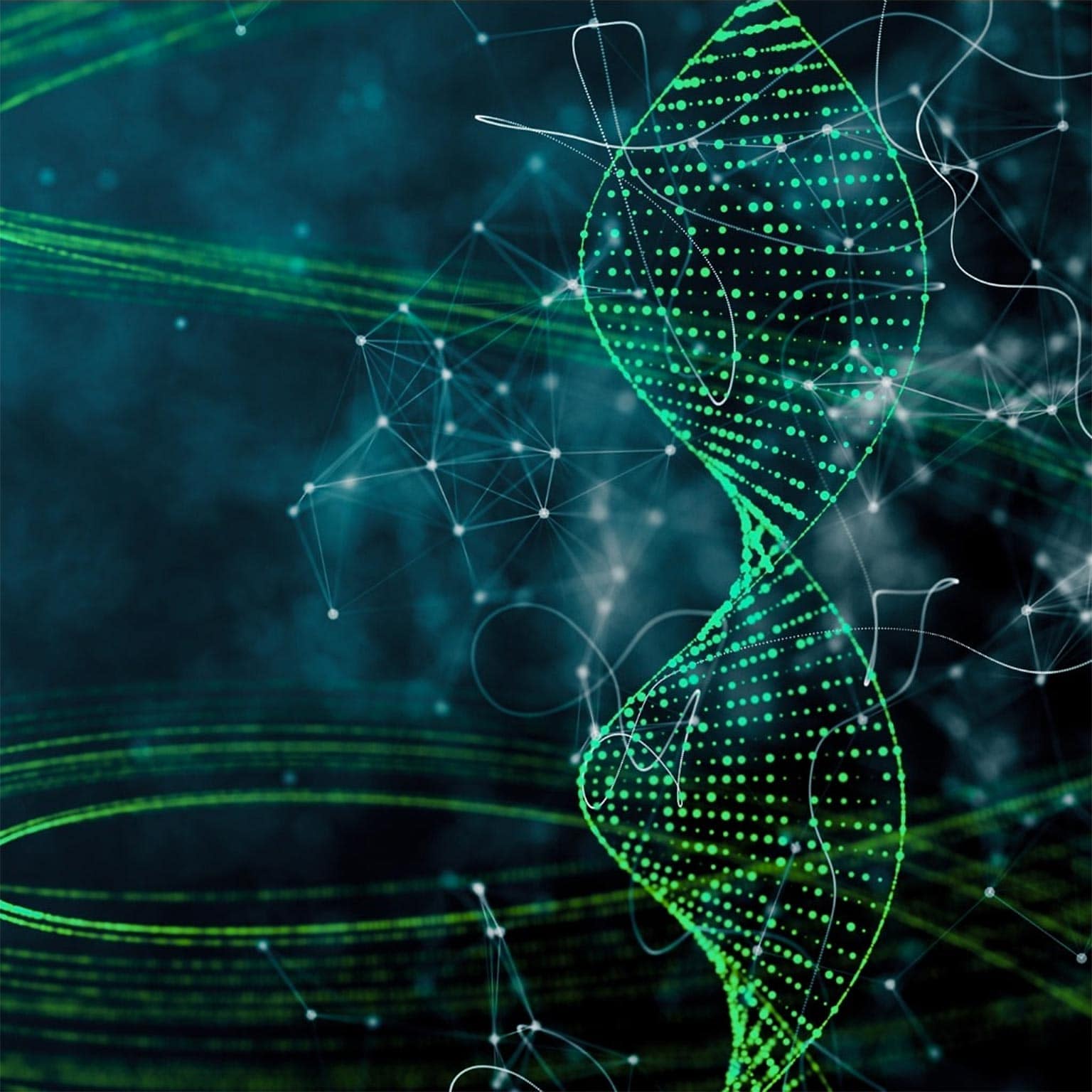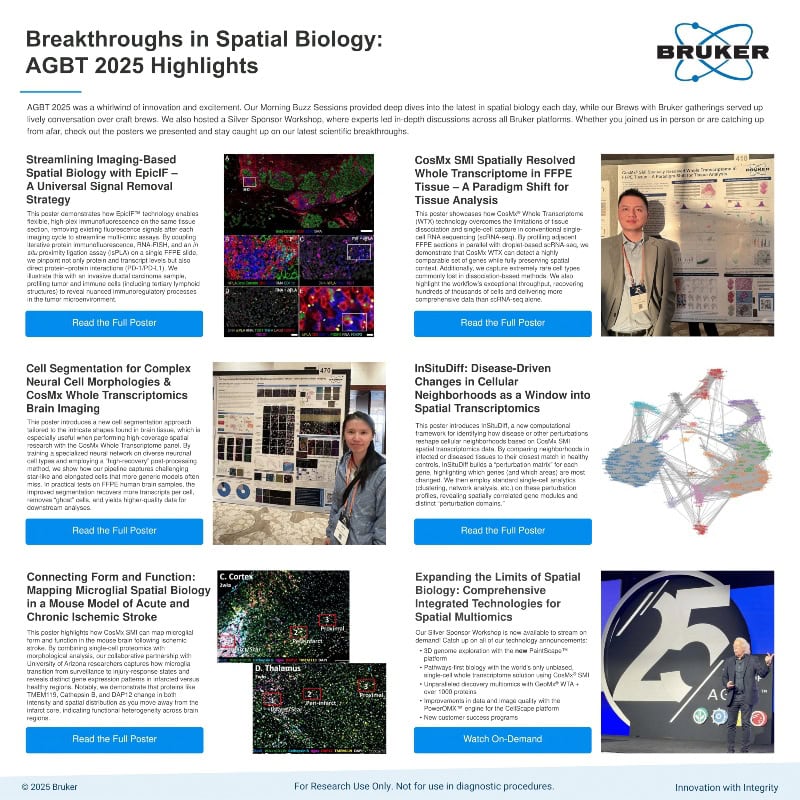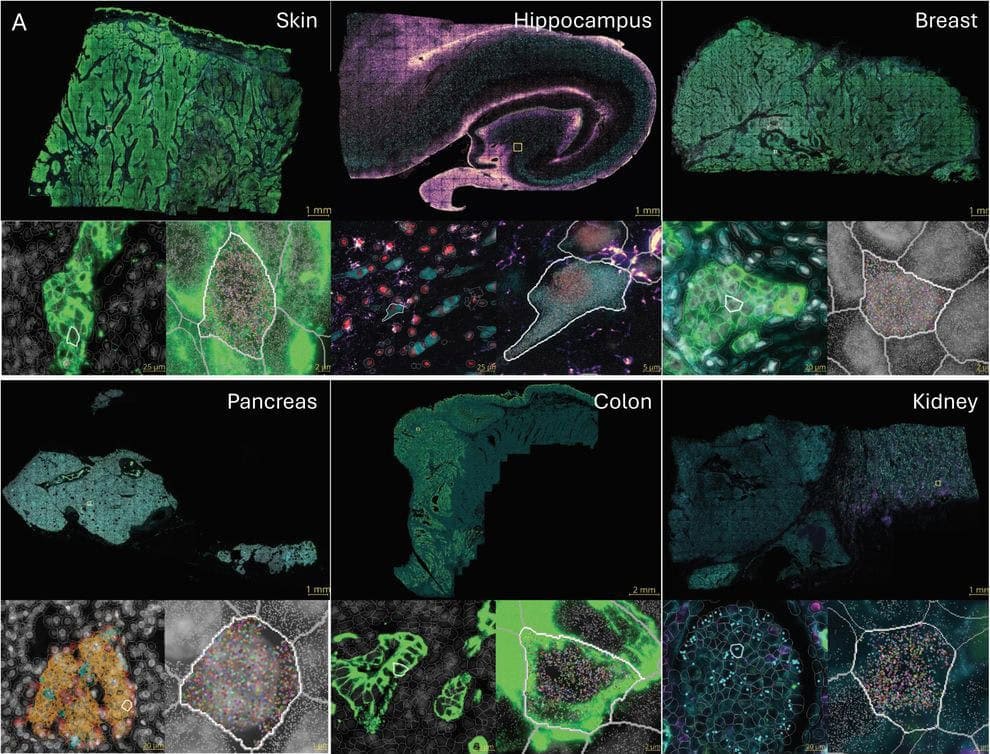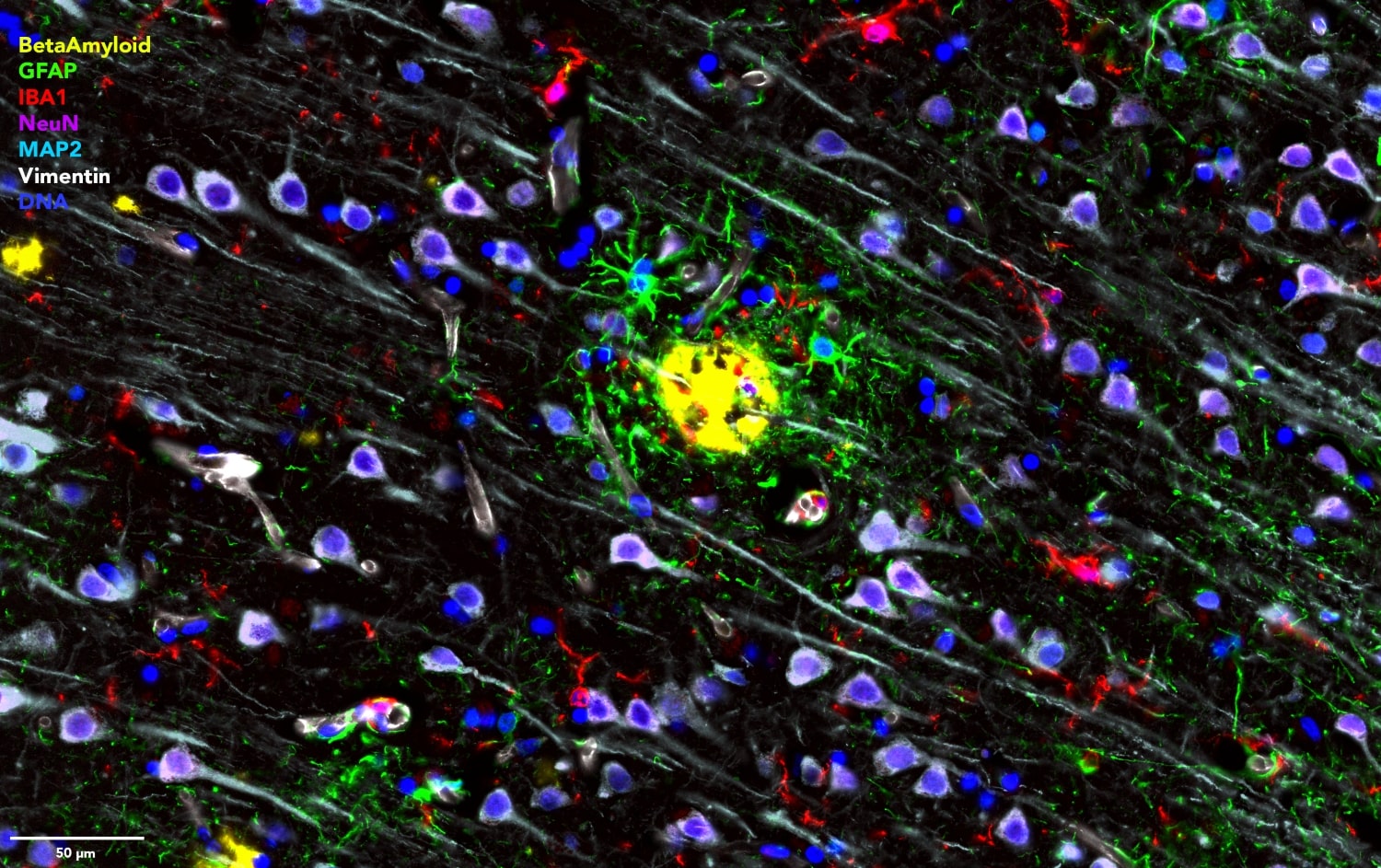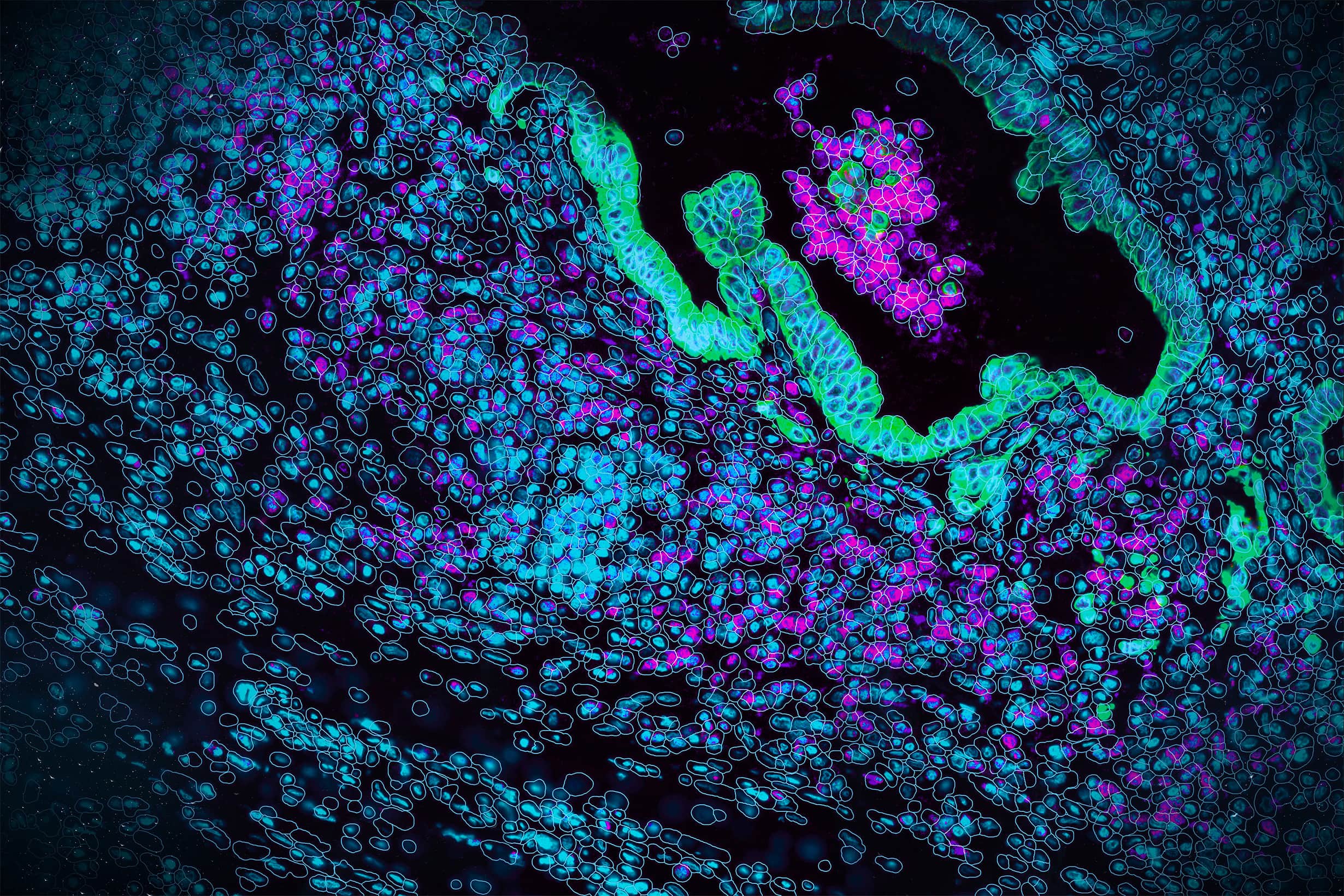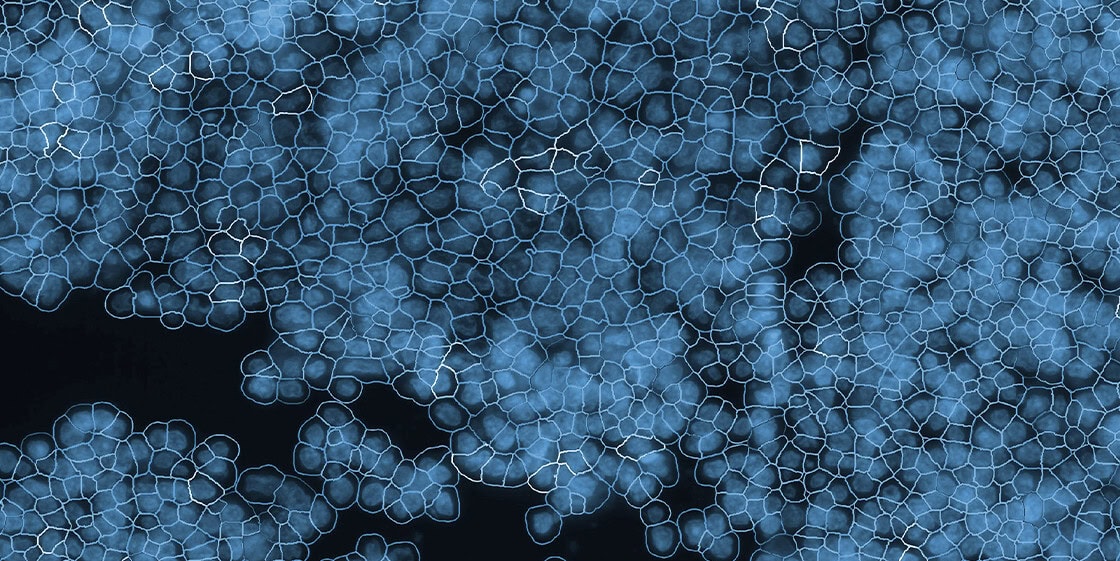
Resource Type: Blog
Blog
The CosMx SMI 2.0: Unmatched advances in single-cell spatial transcriptomics
Explore the CosMx SMI 2.0: Higher RNA sensitivity, whole transcriptome imaging, and faster high fidelity, subcellular spatial transcriptomics.
Blog
Tips to optimize sample prep for highly autofluorescent samples on CosMx® SMI
The CosMx® Spatial Molecular Imager (SMI) instrument performs fluorescent imaging to read out in-situ hybridized fluorescent reporters which uniquely identify RNA transcripts. The presence of tissue autofluorescence background may reduce…
Blog
Moving Beyond scRNA-seq: The Power of CosMx Whole Transcriptome
Single-cell RNA sequencing (scRNA-seq) has transformed molecular biology by enabling high-throughput transcriptional profiling at cellular resolution. But as powerful as scRNA-seq is, it comes with trade-offs: loss of spatial information,…
Blog
Breakthroughs in Spatial Biology: AGBT 2025 Highlights
Discover the future of spatial biology! Read about our AGBT 2025 eBook featuring posters highlighting powerful new breakthroughs EpicIF, CosMx WTX, and InSituDiff, plus on-demand workshop access.
Blog
Revealing Spatial Biology at Whole-Transcriptome Scale: Introducing the CosMx® Human Whole Transcriptome Panel
Learn how CosMx WTX brings whole-transcriptome coverage to every cell in FFPE tissues, uncovering truly groundbreaking spatial biology.
Blog
Miranda Orr’s Spatial Analyses from Discovery to Validation Reveal Key Processes in Alzheimer’s Disease
Discover Dr. Miranda Orr’s cutting-edge spatial multiomics research in neuroscience, revealing new Alzheimer’s disease processes with advanced proteomic tools.
Blog
Tips when performing CosMx™ data analysis with AtoMx SIP
Single-cell spatial biology opens doors to unprecedented scientific questions requiring the development of new computational workflows and approaches to analyze and interpret data. Whether you are new to single-cell spatial…
Blog
Tips when Generating Single-Cell Spatial Data: Post Run H&E and Antibody Staining
We are excited to share the third installment of tips for successful CosMx™ SMI single-cell spatial runs at 1000-plex. Our first installment of tips focused on data by tissue and…
Blog
Tips When Generating Single-Cell Spatial Data: Sample Selection
We are excited to share the second installment of tips for successful CosMx™ SMI single-cell spatial runs at 1000-plex. Our first installment of tips focused on data by tissue and…
Blog
NanoString Powered by NVIDIA GPU Technology Accelerates Scientific Discovery and the Age of Spatial Biology
For researchers studying diseases that cruelly take the lives of millions — Alzheimer’s disease, lung, colon, breast, and pancreatic cancer, among others — it has been a long-held dream to…
Blog
Top 3 Tips for Successful CosMx™ SMI Single-cell Spatial Runs at 1000 plex
We are excited to share insights and recommendations to enhance your experience with CosMx™ SMI 1000-plex RNA assays. The quality of single-cell spatial data is influenced by various factors, and…
Blog
Getting Started with Your First GeoMx® DSP Experiment: A Step-by-Step Guide
The GeoMx Digital Spatial Profiler (DSP) is a powerful tool for spatial multiomics, the in situ analysis of RNA and protein expression in tissue sections. GeoMx DSP gives you the…

